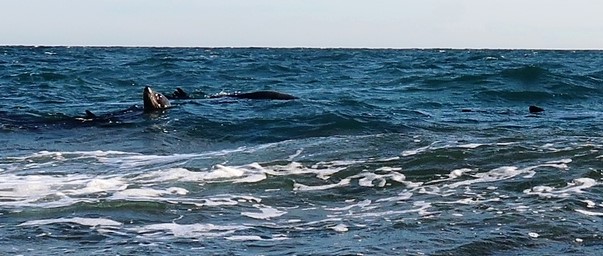David Muirhead spotted a few longnose fur seals, Arctocephalus forsteri, prior to our recent snorkel at Snapper Point at Aldinga Beach. The seals were still swimming just off of the reef platform as we made our way out to the reef edge.
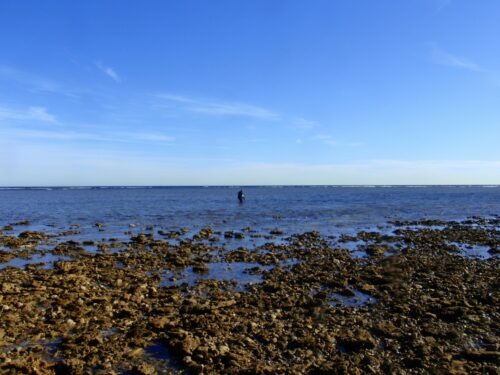
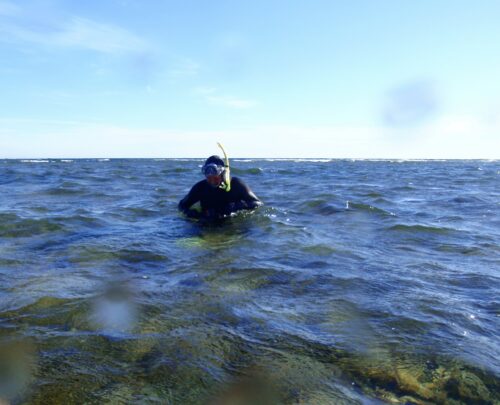
David preparing to snorkel
David took a few photos when he was close enough to the seals. He posted his photos on iNaturalist.org at https://www.inaturalist.org/observations/49410484.
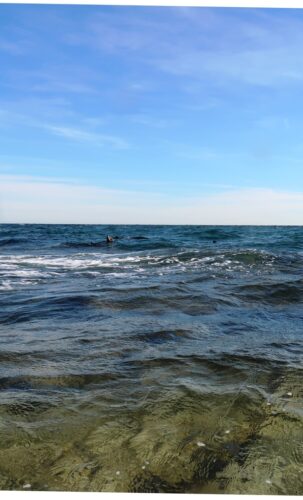
All three of our members (David, Paul & myself) saw the seals. They would often look up at us and even do high leaps out of the water. I did not get close enough to them myself to film them, but Paul managed to get some video footage of them towards the end of his snorkel. The seals stayed out there whilst we returned to our cars to change and have lunch.
David’s iNaturalist photo posts included the following comments: –
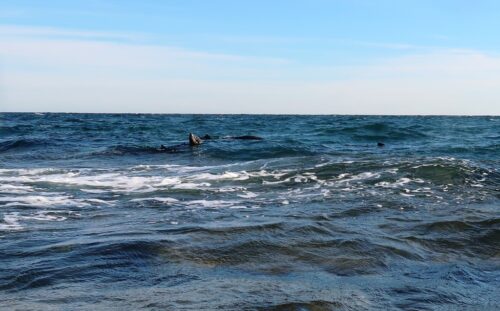
“Inquisitive pup pokes head up as we are about to enter from reef platform (pic 1).There were about 5 fur-seals in a small group hanging about on outgoing tide at this part of the outer edge of the inter-tidal reef platform.(In pic 1 an adult fur seal, mostly submerged, is barely visible on the L, near edge of the ledge, and in pics 3+4 you can see at least three fur-seals). No alpha males present.”
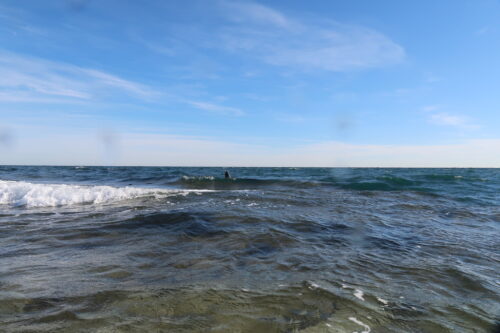
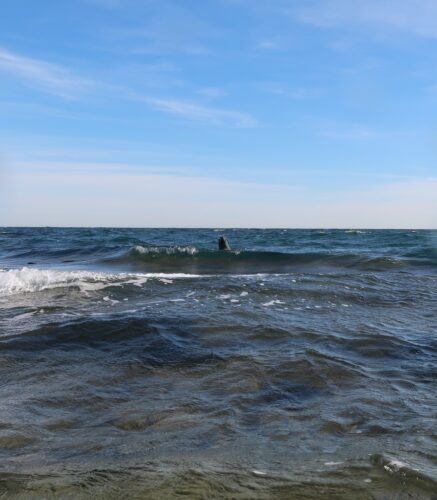
This fur seal species has become an increasingly common sighting off Adelaide’s southern metro coastline in recent years as the population continues to recover from 19th and 20th century seal hunting.
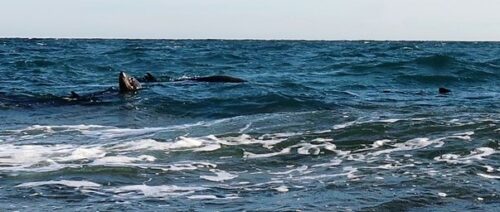
David added the following notes, pointing out they are based mainly on personal experience and are therefore anecdotal and highly subjective:
“Although Longnose Fur Seals will happily interact with humans (surfers, kayakers, snorkelers, divers, etc..) I find their interest in me and my buddy divers and snorkelers is usually brief. They might play around for a few moments, and even perform acrobatics including vaulting over snorkelers who are on the surface, but they soon *disappear (*except for the occasional senescent male eking out his last few years by living under and around jetties and wharves, where they are able to steal hooked fish off recreational fishers’ tackle, and are sometimes deliberately fed freshly caught by-catch by the more compassionate if misguided among us).
The fleeting nature of this specie’s playfulness contrasts with the almost insatiable playfulness of Australian Sea Lions. In an individual Longnose Fur Seal’s case this could be due to familiarity with Homo sapiens based on equally benign past encounters or having more important things in mind e.g. foraging. Even some of the well-researched key differences between the 2 species such as ranges and depths to which they can dive while hunting may be relevant. (e.g. their Sea Lion brethren are much more strongly site-associated, have smaller home ranges, are mainly bottom feeders, cannot dive as deep, and may spend more time ashore resting between foraging outings, allowing more ‘play time’). And their comparatively tiny population [~6000 or so adults at last estimate, static or perhaps declining?] together with surviving colonies usually being located far from centres of human population, means individuals would have fewer encounters with humans, hence fewer opportunities to investigate and play with eco-divers). In my experience (confined to S.A. waters) individual Fur Seals seldom linger to play with humans for longer than a minute, if that. This contrasts markedly with the interactions I have had with the much rarer (critically endangered globally with the few remaining breeding colonies now almost all within South Australia) Australian Sea Lion. Australian Sea Lions -particularly the pups and younger adults- seem to have an almost insatiable appetite for playing with or around divers.
This might explain why the few regulated and remarkably popular ecotourism charter services for swimming with resident South Australian pinnipeds (there are just the 2 species known to reside here) target Australian Sea Lions.
I believe that this extraordinary playfulness is becoming the Australian Sea Lion’s best hope of survival. They are otherwise highly likely to become extinct in the wild within a few decades at most.”
(All seal photos were taken by David Muirhead)

